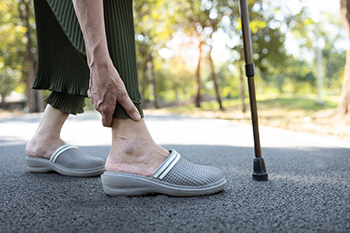
Ballet dancers ought to take the health of their feet exceedingly seriously. When one engages in ballet, they can use their feet in potentially strenuous ways that might make them more susceptible to enduring foot injuries. Consequently, ballet dancers can consider engaging in a robust stretching routine to keep the feet limber, loose, and flexible. For example, a ballet dancer might consider stretching the arch of the foot by performing what is known as a plantar fascia stretch. This can be performed in a seated position with the right leg resting on the left thigh. One can then flex the foot while gently stretching the toes so that they are eventually pointing towards the right leg. This can be performed on the other foot as well. If you are a ballet dancer and want to learn more about stretching the feet, contact a podiatrist today.
Stretching the feet is a great way to prevent injuries. If you have any concerns with your feet consult with Terri Quebedeaux, DPM from Agave Podiatry . Our doctor will assess your condition and provide you with quality foot and ankle treatment.
Stretching the Feet
Being the backbone of the body, the feet carry your entire weight and can easily become overexerted, causing cramps and pain. As with any body part, stretching your feet can serve many benefits. From increasing flexibility to even providing some pain relief, be sure to give your feet a stretch from time to time. This is especially important for athletes or anyone performing aerobic exercises, but anyone experiencing foot pain or is on their feet constantly should also engage in this practice.
Great ways to stretch your feet:
- Crossing one leg over the others and carefully pull your toes back. Do 10-20 repetitions and repeat the process for each foot
- Face a wall with your arms out and hands flat against the wall. Step back with one foot and keep it flat on the floor while moving the other leg forward. Lean towards the wall until you feel a stretch. Hold for 30 seconds and perform 10 repetitions for each foot
- Be sure not to overextend or push your limbs too hard or you could risk pulling or straining your muscle
Individuals who tend to their feet by regular stretching every day should be able to minimize foot pain and prevent new problems from arising.
If you have any questions, please feel free to contact our offices located in Seguin, LaVernia, Gonzales, and Lockhart, TX . We offer the newest diagnostic and treatment technologies for all your foot care needs.









